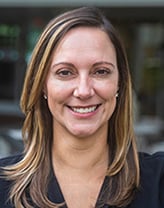Forward-thinking insights focused on a more sustainable tomorrow.
Planning for Evolving Civic Spaces with a Sustainable & Resilient Approach
Civic spaces, from community parks to public plazas, serve as hubs of social, economic, and environmental activity that offer multiple benefits, such as physical and mental health, and inclusive access to transit, entertainment, and jobs. When designing New York City’s iconic Central Park, Frederick Law Olmstead proclaimed it to be the “lungs of the city,” touting the public health benefits of access to nature and fresh air that it provided to all New Yorkers. More and more, the design of civic spaces is transforming to fulfill new societal and environmental needs in response to climate and energy changes, pandemics, and social change—underlining their significance in community resilience and connection.
Urban planners and landscape architects have a special interest in sustainability that can positively influence the evolving dynamic of civic spaces, their potential for embracing a clean energy future, the health benefits they provide, and the inclusive role of art to uplift and reflect together. The planning model for today’s civic spaces calls for a more nuanced, flexible, community-focused approach with sustainability and resiliency at the forefront.
Sustainable Spaces Foster A Clean Energy Future
Sustainability in planning emphasizes meeting current needs without compromising that ability for future generations. Resiliency is about preparing for and recovering from disruptive events. How might our cities evolve and be more resilient if they embraced a sustainable energy paradigm? Visualize civic gathering areas adorned with solar-powered amenities, energy-efficient LED lighting, and electric vehicle (EV) charging infrastructure. These enhancements not only decrease fossil fuel dependence but also showcase the potential of a clean energy future. Urban spaces can contribute to achieving a clean energy future by incorporating renewable energy sources and promoting energy-efficient designs with amenities integrated into public spaces to reduce reliance on fossil fuels.
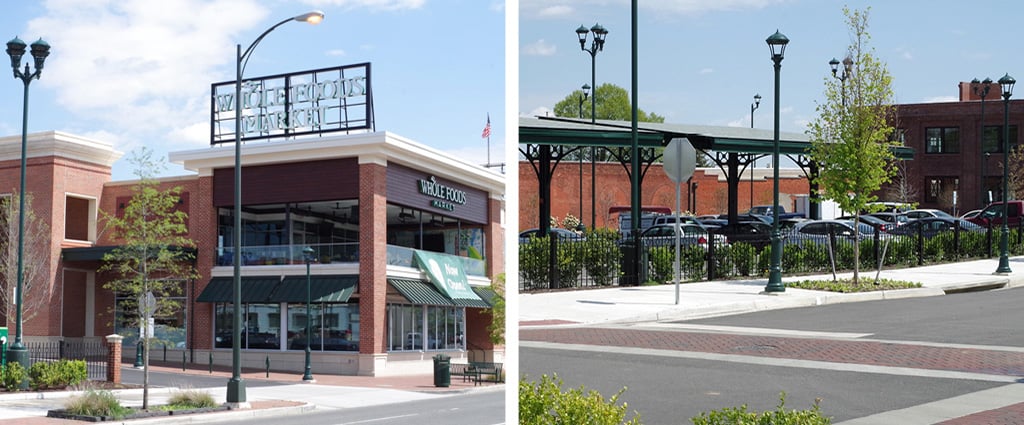
The Sauer Center is a previously underutilized district in Richmond, Virginia, planned with multimodal connections and solar panel canopies over parking. VHB is providing landscape architecture, transportation planning, and site/civil engineering to shape the 37 acres of community in a meaningful, holistic way.
Park and public space designers increasingly integrate sustainable components to address climate change. Arverne East Development in the Rockaway Peninsula of New York, designed by VHB, embeds sustainable practices in its urban site work environment. The 116-acre mixed use development includes a 35-acre nature preserve, urban farm, and a large public gathering space. Its waterfront area is designed with coastal resiliency considerations to combat sea-level rise and flooding. These aspects work seamlessly together to not only reduce carbon footprints but also educate and involve the public with low-carbon, resilient applications.
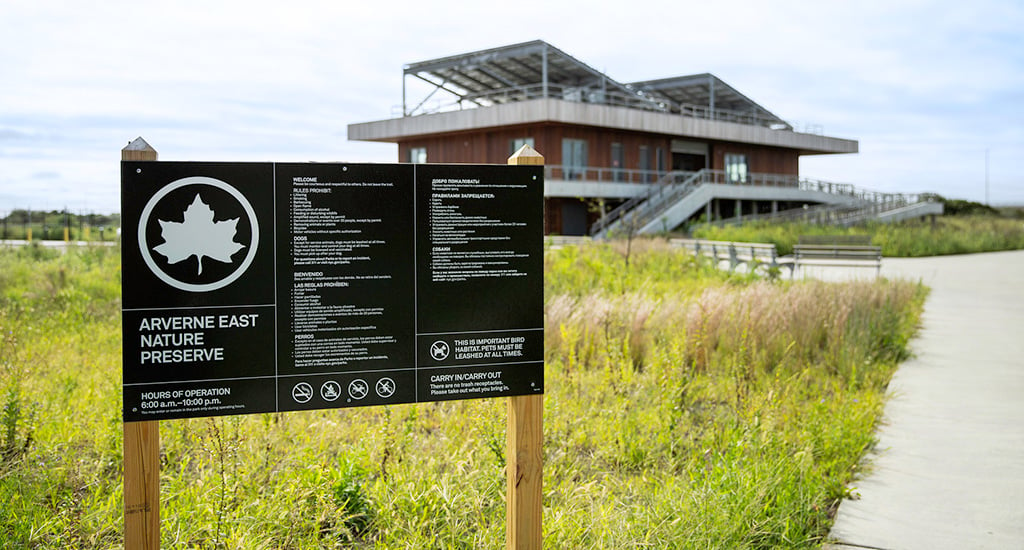
Thoughtful civic space design can address environmental challenges while enriching community spaces. At the Science Museum of Virginia, a former surface parking lot surrounding the museum was transformed into a vibrant park. The redesigned open green space serves as an educational platform that demonstrates the advantages of green infrastructure while also contributing to energy conservation efforts. Native plant species, stormwater management systems, and permeable pavements mitigate urban heat island effects.
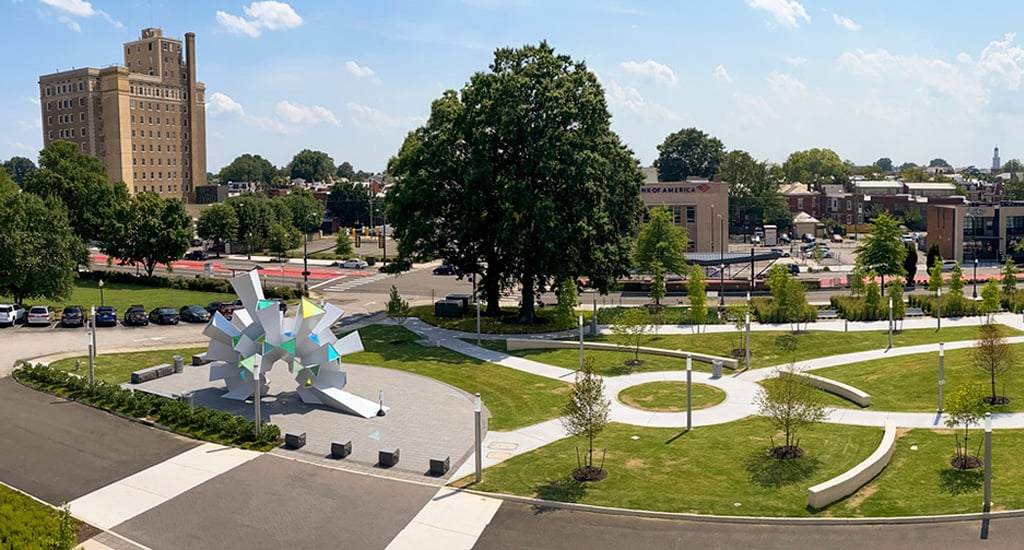
Civic Flexibility Incorporates New Mobility
Urban and civic spaces are increasingly adapting to incorporate transit powered by new mobility such as autonomous vehicles (AVs), e-scooters, and e-bike sharing programs. Providing infrastructure that supports these new modes of transportation enhances connectivity and reduces traffic congestion.
It’s not enough to just meet current civic needs at technology’s rate of change; smart cities are already considering parking garage roofs as vertiports for advanced air mobility vertical take-off and landing (eVTOL) aircraft. Technology-enabled transportation and transit-oriented-design (TOD) is a critical component of resilient civic spaces that are mindful of future generations.
Amanda Street Park at East Altamonte was planned for connection to a driverless electric AV path now operating in Altamonte Springs, Florida. Portions of the CraneRIDES AV path parallel a multimodal flex path for bicycles, pedestrians, scooters and other modes of transportation that converge as a multimodal path at Altamonte Mall. The partnership between the City of Altamonte Springs and the Florida Department of Transportation will enable a broad network of critical community connections that elevate opportunity for residents seeking healthcare, recreation for visitors, and modal choice for daily commuters.
Incorporating new mobility and clean energy practices in public spaces have health benefits. Public and private organizations are increasingly working with planners to incorporate wellness and mental health benefits into the design of public spaces, influenced by the COVID-19 pandemic’s limitations on social and recreational activities. The pandemic accelerated trends toward making cities more walkable, emphasizing people-first designs.
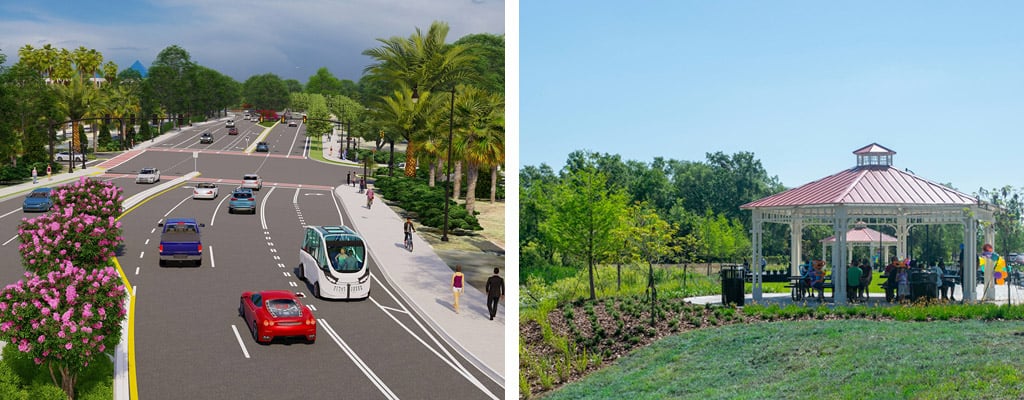
Resilient Civic Spaces Use Inclusive Art to Uplift & Reflect
Art in public spaces enriches urban landscapes through placemaking, adding cultural value and engaging the community. Installations, murals, and performance spaces can reflect local heritage and contemporary issues, fostering a sense of identity and pride that reaches across generations and cultures.
The World War 1 Memorial in Washington, D.C., is a poignant and reflective urban civic space that honors the sacrifice of American soldiers during a generational disruptive historical event. The Memorial is situated at the former Pershing Park with a balance of open green space and intimate areas tailored for reflection. Located just a few blocks from the White House and the National Mall, the sculpture at its center narrates the story of soldiers’ experiences during the war, honoring their resilience, and serving as a focal point that invites visitors to engage directly with the history it commemorates.
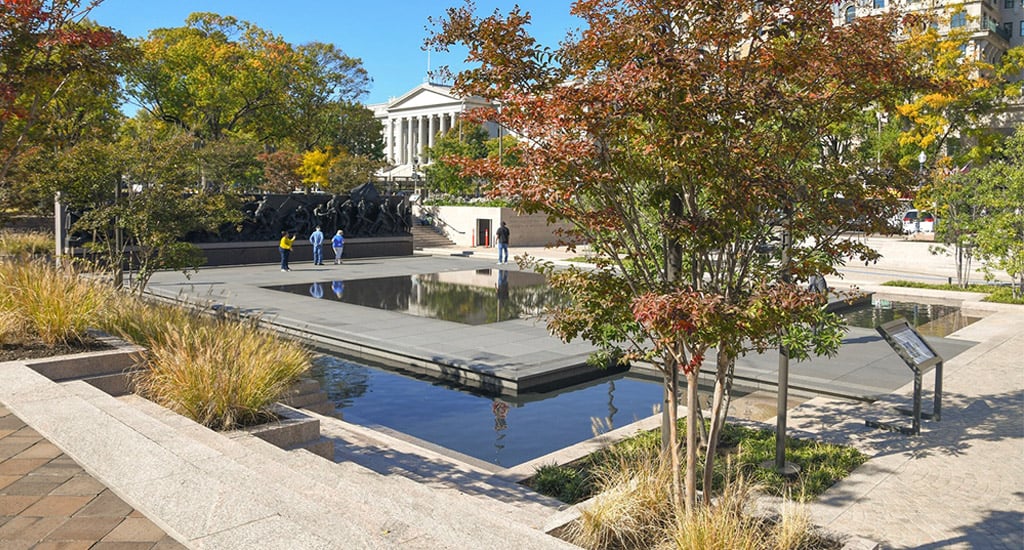
The civic common can enhance inclusiveness in the built environment by providing equitable spaces that are co-created with diverse populations. Access to clean, safe, and welcoming urban centers can bridge social gaps and foster community cohesion, while providing connections to health and wellness resources that can help reduce air pollution or obesity rates. The Urban Land Institute (ULI) recognizes the role of inclusive park and public space design in addressing generations-old systemic inequities and significant historical events. ULI’s Urban Resilience program is focused on how buildings, cities, and communities can be more resilient to the impacts of climate change and other environmental vulnerabilities, with a focus on the opportunity that parks present to enhance community resilience, as well as improve the local quality of life, access to recreation, and public health. The civic realm can be a platform for cultural exchange, civic engagement, and social support systems when planned with an empathetic approach and public involvement from the very beginning.
Orlando’s vibrant Luminary Green Park serves not only as a green oasis within the urban fabric but also as a symbolic space that honors and celebrates the contributions of prominent community members from the historic Black community of Parramore. The Luminaries—dedicated light installations featuring local heroes—act as focal points within the park, each telling the story of individuals who have made significant impacts on the community.
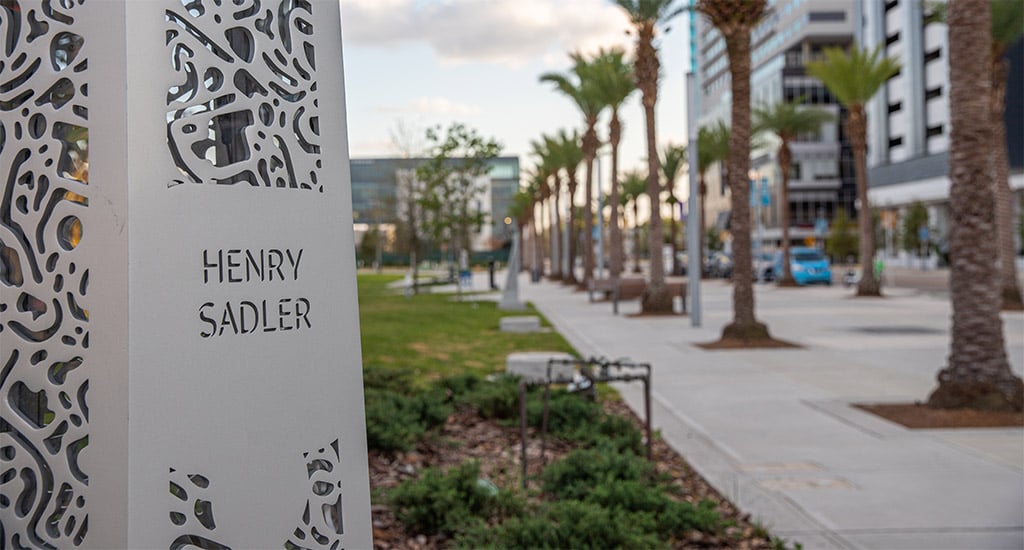
How VHB Can Help
VHB recognizes how our civic spaces hold immense potential—not only from a recreation standpoint but as critical spaces that evolve to help communities become more sustainable and resilient through art, new mobility, wellness, and connections that move us toward a clean energy future.
Connect with Roberta today to begin planning a civic space that fosters equity while protecting the natural environment.



